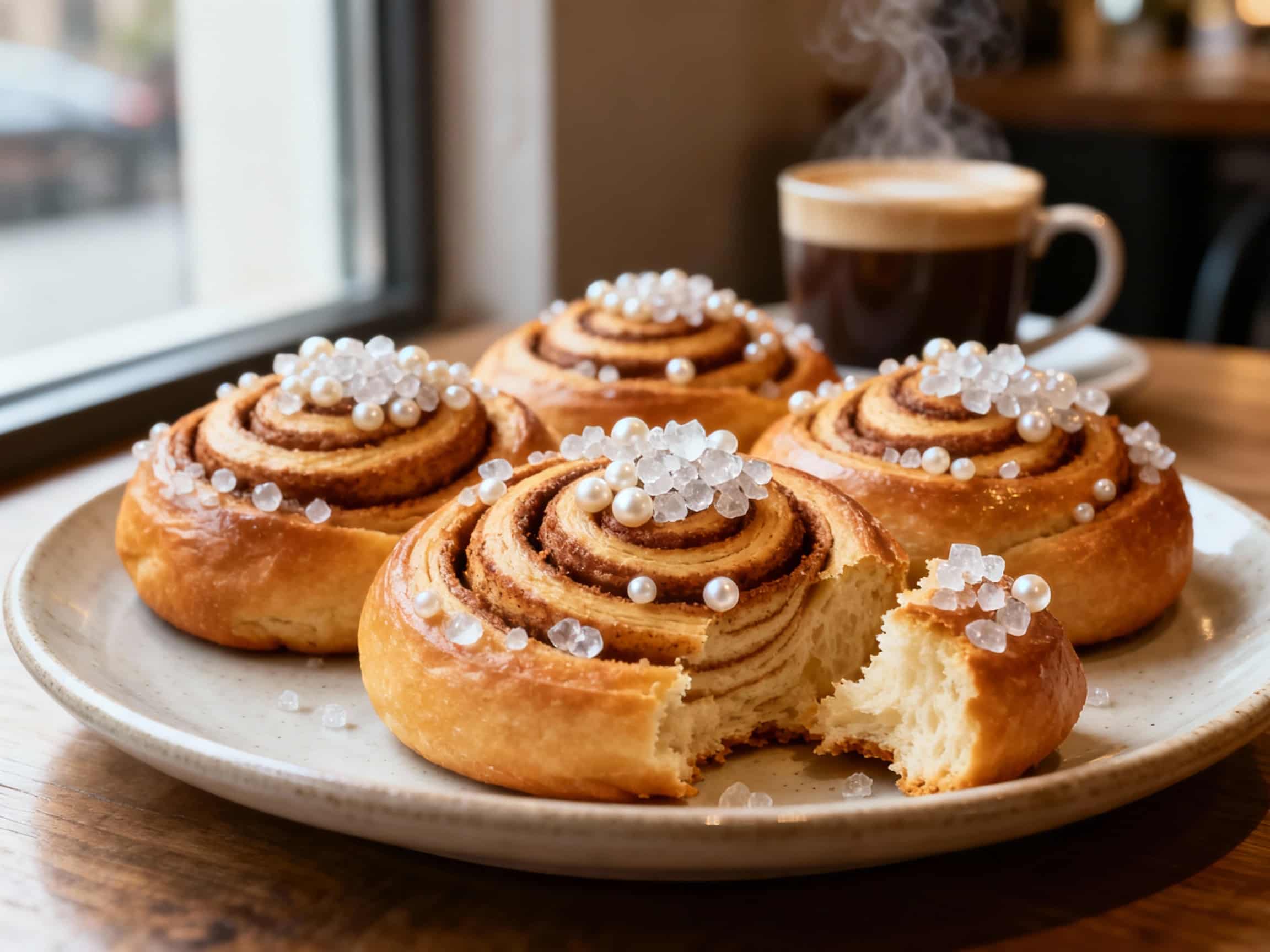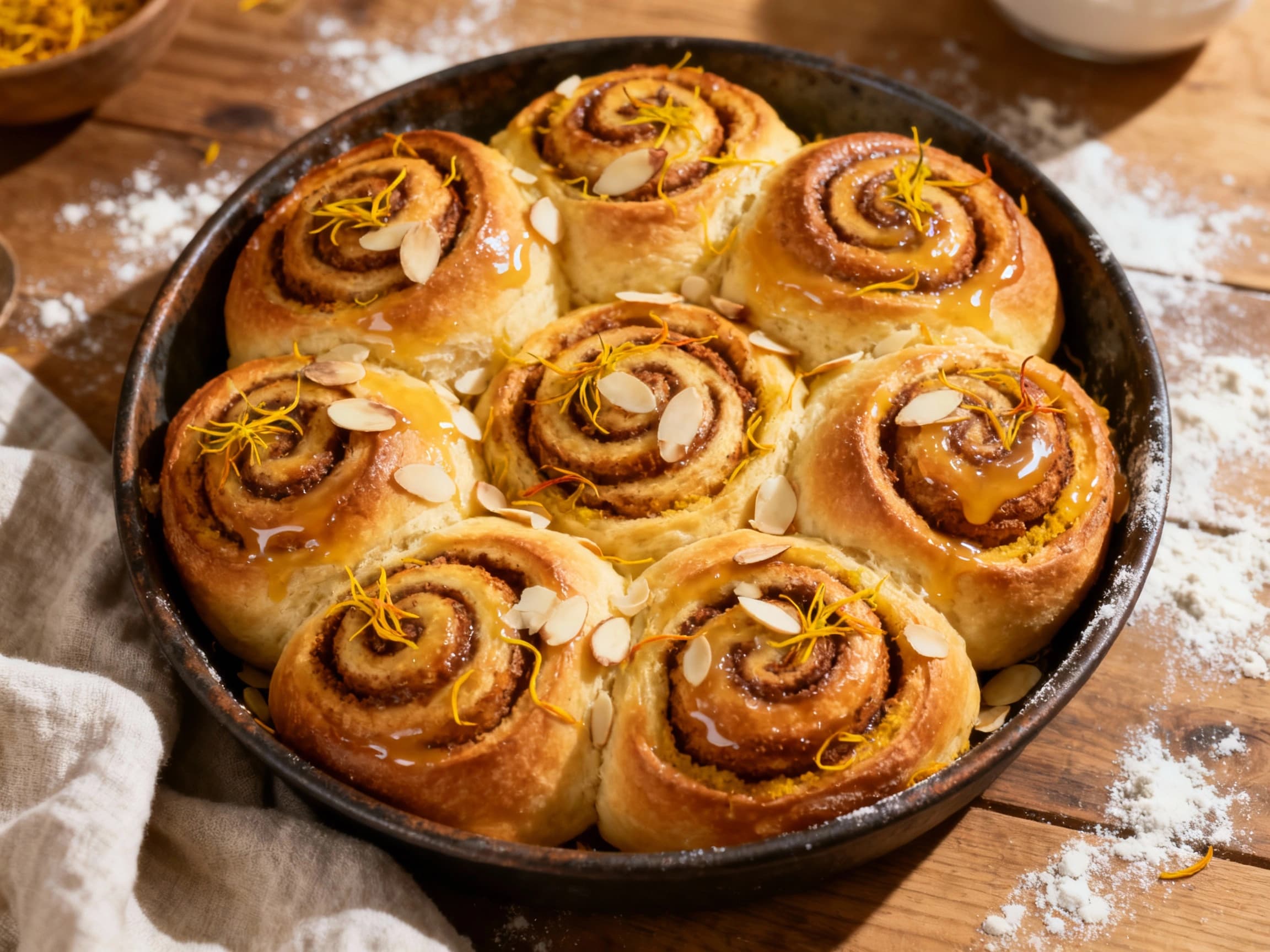
Cinnamon Buns
Kanelbullar
- Country
- Sweden
- Region
- Not specified
- Recipes
- 3 Recipes
Dish information
Kanelbullar, or Swedish Cinnamon Buns, are an absolute icon of Swedish baking and a beloved part of 'fika' culture – the Swedish tradition of taking a break for coffee and a sweet treat. While cinnamon pastries exist in many cultures, the Swedish kanelbulle has a distinct character. Its origins can be traced back to the early 20th century, with documented recipes appearing by the 1920s, evolving from simpler pastry traditions. The bullar are made from a sweet yeast dough enriched with butter, milk, and eggs, which gives them their characteristic soft and chewy texture. The filling is a fragrant mixture of butter, sugar, and ground cinnamon, often complemented by ground cardamom, which adds a subtly complex aromatic note unique to Scandinavian baking. The dough is typically rolled out, spread with the filling, rolled up into a log, sliced, and then twisted or shaped into various forms, often adorned with pearl sugar before baking. The 'fika' tradition itself, a social ritual ingrained in Swedish daily life, elevates the humble cinnamon bun to a symbol of relaxation, connection, and enjoyment. October 4th is even celebrated as 'Kanelbullens dag' (Cinnamon Bun Day) in Sweden, underscoring its immense cultural significance. Kanelbullar are more than just a pastry; they are an expression of Swedish warmth, hospitality, and the simple pleasure of a sweet moment.
Timeline
The first recorded recipe for the modern Swedish cinnamon bun (Kanelbulle) appears in a Swedish cookbook.
Kanelbullar become increasingly popular and widely available in Swedish bakeries and homes.
The tradition of 'fika' and Kanelbullar solidifies its cultural importance in Sweden.
October 4th is established as 'Kanelbullens dag' (Cinnamon Bun Day) in Sweden, celebrating the beloved pastry.


